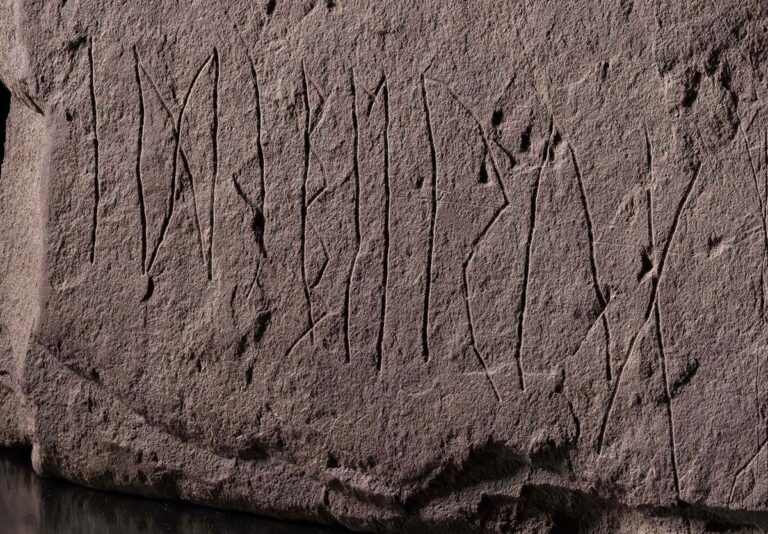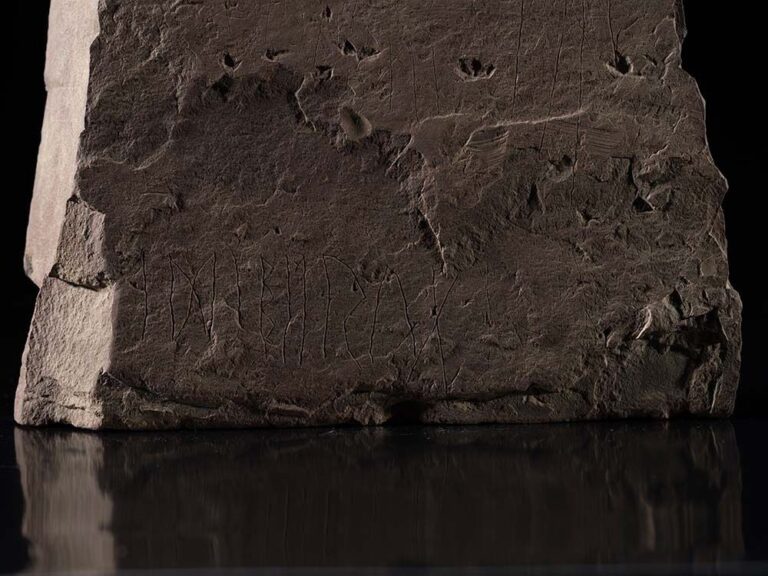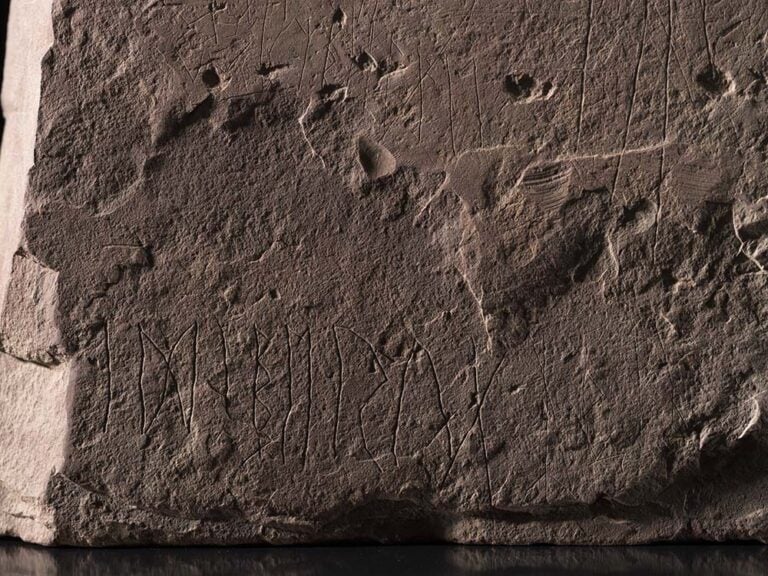The exceptional find of a 2,000-year-old runestone in Norway was kept secret by archaeologists for over a year. Here’s the story of the remarkable find—and how you can see it for yourself.
In the autumn of 2021, archaeologists working on a grave field in Hole near Tyrifjorden discovered a stone with a runic inscription. Following more than a year of study, experts from the Museum of Cultural History in Oslo have dated the inscription at between 1,800 and 2,000 years old.

Radiocarbon dating of the stone along with other grave items places its origin somewhere between the year 0 and 250 CE, in what we know today as the Roman Iron Age in Scandinavia.
Read more: The Runestones of Scandinavia
Should the dating be correct, it would make the ‘Svingerud stone’ the oldest runestone found in the world. It could also make it the oldest example of writing ever found in Scandinavia.
A fascinating study of runes
The word or words inscribed on the stone are unknown, so it also raises some interesting questions about the early runic languages.
“Having such a runic find fall into our lap is a unique experience and the dream of all runologists,” said runologist Kristel Zilmer, Professor of Written Culture and Iconography at the Museum of Cultural History, University of Oslo.

She spent the past year investigating and interpreting the inscriptions on the rune stone. At the same time, her colleagues worked on dating the grave in which the stone was found.
Eight of the runes on the front face of the stone may spell out a woman’s name, according to Zilmer’s analysis. She believes the text “possibly refers to a woman called Idibera and the inscription could mean ‘For Idibera‘.”
However, there are other possibilities. Idiberug could be the rendering of a name such as Idibergu or Idiberga, or perhaps the kin name Idiberung. It’s also possible that someone used this stone as practice for carving runes.
Language before the Vikings
We do know quite a lot about the Old Norse used during the Viking Age. Much less is known about the proto/Germanic language used in Scandinavia during the Roman Age, however.
Experts have little knowledge about the Proto-Germanic language that people in Norway and Scandinavia would have used.

It’s assumed that whoever invented the first runic alphabet may have been inspired by the Latin alphabet, even though the structure is very different. Others theorise that some letters may have been inspired by an Arabic script of the time.
What the runestone discovery does show is how much the runic language changed between the time of this stone and the runes used during the Viking Age, up to 1,000 years later.
Eventually runes fell out of favour in Norway as the Latin alphabet took hold between the years 1000 and 1200. However, they did linger through to the Middle Ages in Iceland and parts of Sweden, while the Sami people are believed to have used runes even longer.
See the runestone for yourself
The Svingerud stone will go on display for a short time in Oslo. Starting from 21 January, visitors to the Museum of Cultural History in Oslo will be able to view the stone. The exhibition runs until 26 February. The museum is closed on Mondays.

